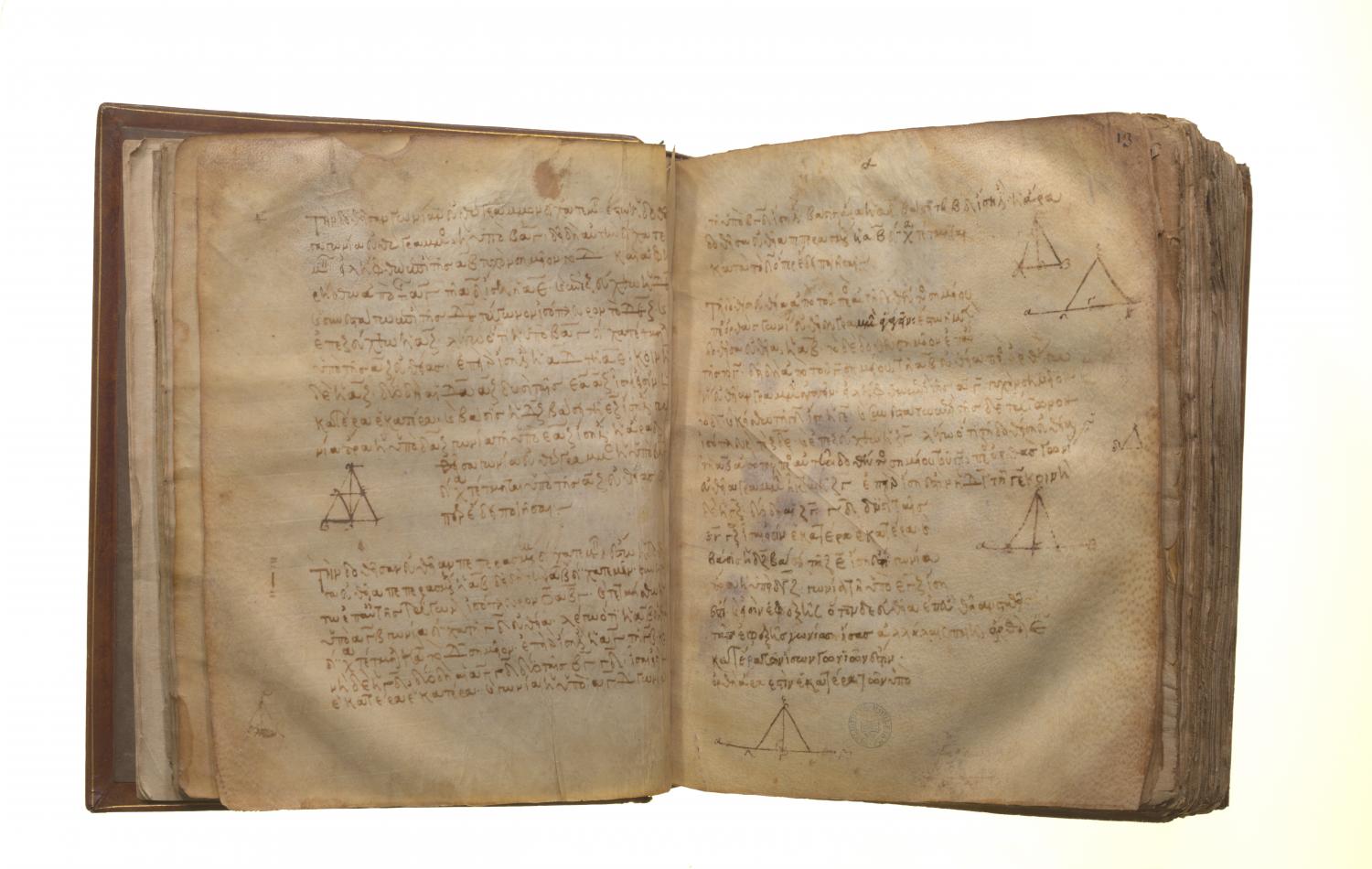Translations
Τὴν δοθεῖσαν εὐθεῖαν πεπερασμένην δίχα τεμεῖν. Ἔστω ἡ δοθεῖσα εὐθεῖα πεπερασμένη ἡ ΑΒ: δεῖ δὴ τὴν ΑΒ εὐθεῖαν πεπερασμένην δίχα τεμεῖν. Συνεστάτω ἐπ' αὐτῆς τρίγωνον ἰσόπλευρον τὸ ΑΒΓ, καὶ τετμήσθω ἡ ὑπὸ ΑΓΒ γωνία δίχα τῇ ΓΔ εὐθείᾳ: λέγω, ὅτι ἡ ΑΒ εὐθεῖα δίχα τέτμηται κατὰ τὸ Δ σημεῖον. Ἐπεὶ γὰρ ἴση ἐστὶν ἡ ΑΓ τῇ ΓΒ, κοινὴ δὲ ἡ ΓΔ, δύο δὴ αἱ ΑΓ, ΓΔ δύο ταῖς ΒΓ, ΓΔ ἴσαι εἰσὶν ἑκατέρα ἑκατέρᾳ: καὶ γωνία ἡ ὑπὸ ΑΓΔ γωνίᾳ τῇ ὑπὸ ΒΓΔ ἴση ἐστίν: βάσις ἄρα ἡ ΑΔ βάσει τῇ ΒΔ ἴση ἐστίν. Ἡ ἄρα δοθεῖσα εὐθεῖα πεπερασμένη ἡ ΑΒ δίχα τέτμηται κατὰ τὸ Δ: ὅπερ ἔδει ποιῆσαι.
To bisect a given finite straight line. Let AB be the given finite straight line. Thus it is required to bisect the finite straight line AB. Let the equilateral triangle ABC be constructed on it, [I. 1] and let the angle ACB be bisected by the straight line CD; [I. 9] I say that the straight line AB has been bisected at the point D. For, since AC is equal to CB, and CD is common, the two sides AC, CD are equal to the two sides BC, CD respectively; and the angle ACD is equal to the angle BCD; therefore the base AD is equal to the base BD. [I. 4] Therefore the given finite straight line AB has been bisected at D.
